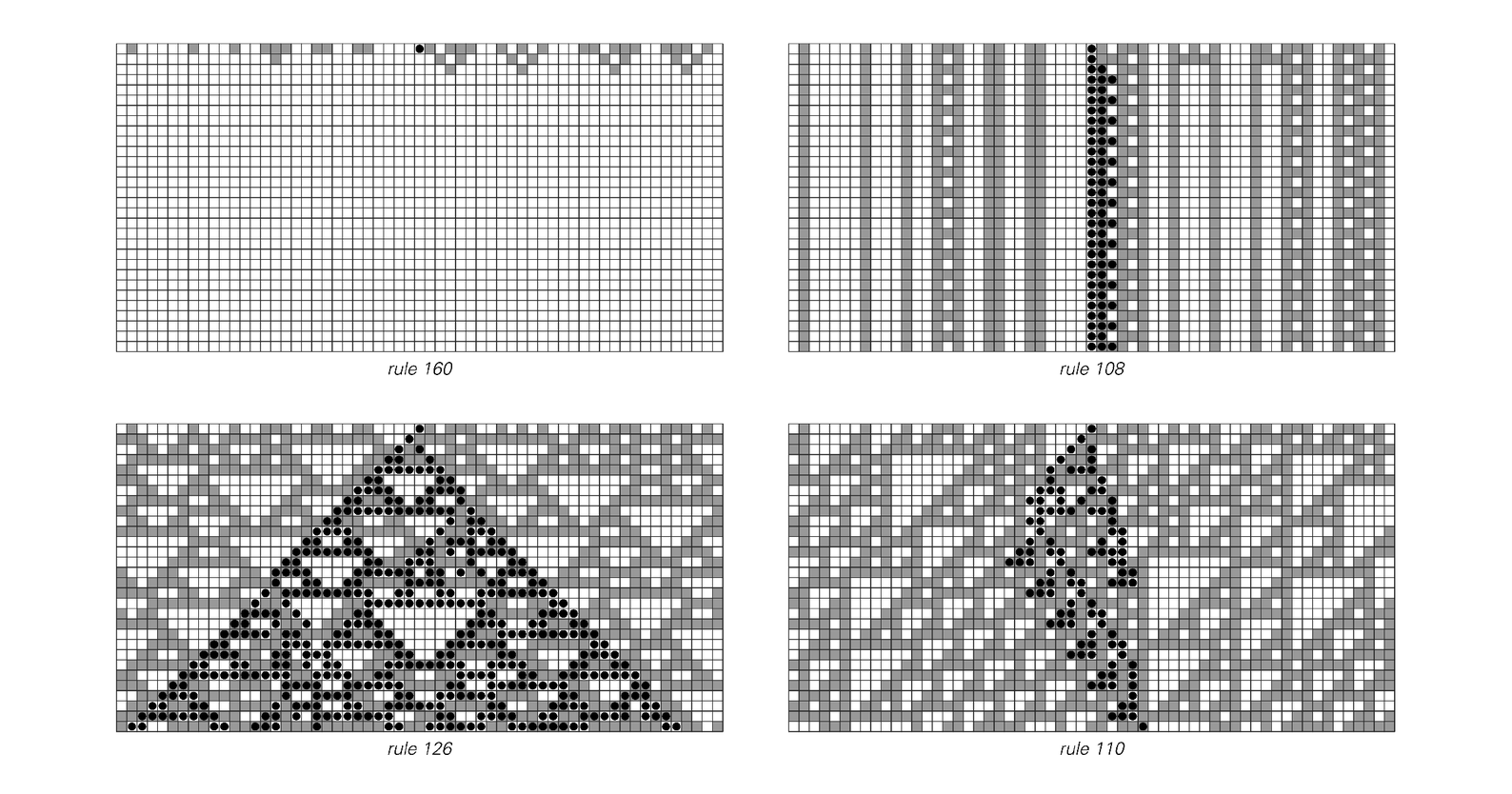Sensitivity to Initial Conditions
In the previous section we identified four basic classes of cellular automata by looking at the overall appearance of patterns they produce. But these four classes also have other significant distinguishing features—and one important example of these is their sensitivity to small changes in initial conditions.
The pictures below show the effect of changing the initial color of a single cell in a typical cellular automaton from each of the four classes of cellular automata identified in the previous section.
The results are rather different for each class.
In class 1, changes always die out, and in fact exactly the same final state is reached regardless of what initial conditions were used. In class 2, changes may persist, but they always remain localized in a small region of the system. In class 3, however, the behavior is quite different. For as the facing page shows, any change that is made

The effect of changing the color of a single cell in the initial conditions for typical cellular automata from each of the four classes identified in the previous section. The black dots indicate all the cells that change. The way that such changes behave is characteristically different for each of the four classes of systems.



